It does kind of look like a gingerbread house!
The hotel at 6 W. Castillo Drive was festive for the holidays.
Alesia and I stayed on the second floor in a room with a terrace.
From the terrace, we observed the steady stream of cars, tour buses, pedestrians and even horse-drawn carriages. Just a few days into the new year, the atmosphere was festive.
The lobby of the Renaissance Hotel was all about Christmas!
We enjoyed walking around St. Augustine’s historic district, which includes many unique shops and restaurants. We came home with some fun and fine items to remind us of this New Year’s getaway and rendezvous with relatives.
Our adventures included a tour of the bizarre Medieval Torture Museum. More on that later in this post.
ST. AUGUSTINE’S HISTORY Oldest continuous and permanent European settlement in what would become the United States. That in a nutshell is St. Augustine’s historic claim to fame.
The red and white flag flying above this fort, Castillo de San Marcos, was Spain’s national flag in 1565 when it claimed this New World frontier.
But before we go further let’s acknowledge this man: Spanish explorer and conquistador Juan Ponce de Leon who on this statue is credited as being the “discover of Florida” in 1513 landing “near this spot.” Wow, that was 511 years ago!
More than 50 years later, it was this Spanish soldier and sea captain, Pedro Menendez de Aviles, who established an outpost here more than 450 years ago. He called it St. Augustine because he first spotted the land on August 28, the feast of St. Augustine.
Not too far from the old fort is The Great Cross. The 208-foot tall stainless steel structure was dedicated in 1966 to mark 400 years since a Spanish priest planted a Christian cross near this location.
This dramatic image shows Father Francisco Lopez de Mendoza Grajales leading the cross-raising in 1565.
We first saw the cross the night before while walking along San Marco Avenue to a restaurant. I’m glad we went back to see it in daylight and learn the story (plus we had a cool Osprey bird encounter- see my photos later in this post).
The Stations of the Cross, associated with Easter, are posted around the cross. It would be special to attend an Easter Mass outside here!
A cemetery neighbors The Great Cross, which you see beyond the large burial mound. There are grave markers on both sides of the mound with small trees planted above the graves.
The Stations of the Cross are also represented on the plaques in the mounds.
What sacred grounds these are!
Signs like this, as intended, help a visitor grasp the historical significance of a place, person or object.
This one at The Great Cross site emphasizes St. Augustine as the first permanent European/African/Native American settlement on the U.S. mainland.
This pie chart in another part of town shows how St. Augustine over time was controlled by, in order, the Spanish, British, Spanish again, then the United States.
Above the plaque are the five flags. This is on Frances Street in front of the historic Gonzales-Alvarez House. Dating to around 1723, this is the oldest Spanish colonial dwelling in St. Augustine.
The St. Augustine Visitor Center gives a full historical immersion for those interested. This display complements the plaque at The Great Cross about St. Augustine being North America’s oldest settlement of Europeans, Africans and Native Americans.
Spanish galleon replicas can be studied and…
…can be experienced on Spanish-style ships available for tours on the nearby Matanzas Bay.
CASTILLO DE SAN MARCOS
San Mark’s Castle is the English translation of the name of this fort built by the Spanish. The British changed the name to Fort St. mark during their time in charge, and under U.S. control it became Fort Marion.
I took this picture at around 2 p.m. on Jan. 4 after we toured the fort. We arrived around noon and there was no line. Come early to avoid such crowds.
Another tip: for $20 we acquired a one-year pass to all National Park Service locations. And that covers both of us. The regular admission price at this fort is $15 for visitors age 16 and older. Fifteen and under get in free but must be with an adult.
We had ideal weather conditions and enjoyed a leisurely walk around the large structure that offers a well-designed chronological tour.
A soldier is available to answer questions and demonstrate how to fire his gun and cannon.
On the ground level, you can walk from room to room each space providing displays and artifacts.
You get a sense of how the soldiers lived— and slept…
…and how they played when off duty.
This display includes a bunk bed for British soldiers. Their muskets were kept close in a rack at the end of the bed.
Keeping the powder dry was a priority!
Soldiers, whether Spanish, British or American, spent lots of time training. Defending the fort and Spanish settlements from invasion from enemies was, of course, the main goal.
There is a Charleston connection with this St. Augustine fort. Dozens of American patriots were imprisoned here after the British captured Charleston in 1780 during the Revolutionary War. The captives included Thomas Heyward Jr., one of the signers of the Declaration of Independence. Months later Heyward and other Americans were paroled and sent to Philadelphia.
There are plenty of weapons of war to examine. They come in all shapes and sizes.
Note above how decorative the Spanish mortar is.
These are 18th-century garrison cannons.
How imposing and impenetrable Castillo de San Marcos must have appeared by land and sea.
The domed structure was a bell tower.
The old bell tower is one of the many nooks and crannies to explore.
There are turrets like this on each of the fort’s many corners.
This was the only turret we could go into on this day.
A peek through a turret opening to Matanzas Bay.
Formations of small pink, lavender, yellow and white shells accumulated along the nearby Atlantic coastline. Over centuries, the shells form submerged deposits several feet thick.
Military engineer Ignacio Daza was the man with the plan. He selected the fort’s site for its natural defensive strengths. He, however, would not live to the finish, dying seven months after arriving in Florida.
Spanish engineers realized they had a unique geological material nearby and in 1672 work began on the castle fort. Forts were mostly built of wood up to that time. The Spanish wanted something stronger and more durable to defend against the British and French also making New World inroads.
The coquina (tiny shell) stone was quarried in the area of present-day Anastasia State Park. Keep reading to see my beach photos taken there.
The coquina showed its value in 1702 and 1740 when British attacks on the fort were unsuccessful. “Instead of shattering, the coquina stone merely compressed and absorbed the shock of the hit,” according to that fort publication. “The cannon balls just bounced off or sunk in a few inches. The shell rock worked!”
This reminds me of Fort Moultrie near Charleston built from local palmetto trees that also thwarted British cannon fire early in the Revolutionary War.
We spent approximately an hour and 45 minutes at the fort. It wasn’t too crowded, too hot or too cold. You see the clear blue sky behind us.
I left Castillo de San Marcos very impressed with what I saw and how everything was laid out and interpreted.
CATHEDRAL BASILICA OF SAINT AUGUSTINE
St. Augustine boasts religious firsts such as the first Catholic Mass in the continental United States, the first Christian congregation, the oldest Christian congregation in the contiguous United States, and the oldest parish.
A statue of St. Augustine is above the church’s entrance. The sculpture below is a tribute to Father Pedro Camps “The spiritual leader of the Minorcan colony.” Some 1,500 Minorcans came to Florida in 1767 from the Spanish island of Minorca. They were brought in to work on a plantation but didn’t like how they were treated so fled to St. Augustine for relief.
The basilica we see today dates to the late 19th century. It was rebuilt after a fire in 1887. Tycoon Henry Flagler made a considerable donation and a national fundraising campaign helped restore the church to even greater glory.
To follow are photographs of the beautiful sanctuary. The manger scene I especially appreciated during Christmas time.
HENRY M. FLAGLER: SUNSHINE STATE DEVELOPER
Names such as Ponce de Leon and Pedro Menendez de Aviles are important to early St. Augustine and Florida. In more modern times no one seems more influential than Henry M. Flagler. This is his statue in front of the college named for him, Flagler College.
Flagler co-founded Standard Oil with the legendary John D. Rockefeller. So that tells us he was rich! In the 1880s Flagler honeymooned in St. Augustine with his second wife. He saw the potential of Florida as a travel and vacation destination and addressed the question of how to conveniently get there. So he pieced together various railroads that became the Florida East Coast Railway.
Along with his rail line through Florida Flagler also built fine hotels for well-to-do guests. In the late 1880s he opened the Hotel Ponce de Leon (which in 1968 became the centerpiece of the new Flagler College).
What a Gilded Age masterpiece it is! Visitors can go inside and see some of the grand flourishes.
Imagine being a Flagler College student and having a dorm room in this beautiful former luxury hotel! That seems to be a plan in the works per the sign below.
The historic district is very walkable and we were fortunate to have pleasant weather for our sightseeing. That big white building on the right is the Casa Monica Resort & Spa. It dates to 1888 and was also built by Henry Flagler.
We stopped by the hotel for a quick look and rest. The decor is very elegant and upscale (below).
Plaza de la Constitucion (right) is a town center of sorts. It has a long history that includes being a slave market.
The bridge has a pedestrian lane that offers dynamic views of the cityscape.
There’s a bustling marina featuring a boat called, simply, Boat. It was, perhaps, visiting from Wrightsville Beach, N.C., per its registry.
ST. GEORGE STREET SHOPPING
While St. Augustine has plenty of history to absorb it also has a fun shopping area close to many of the major historic sites just shown.
St. George Street (right) is the hub with many unique shops, some quirky. There are jewelry, clothing and touristy gift shops as well as restaurants and bakeries to satisfy any tastes.
My eye is often drawn to the quirky.
Poor Santa! Hope he got down safely from this predicament.
Christine and Alesia Took the lead toward the cleverly named Faux Paws, a shop for dogs and, more importantly, their owners.
We looked at and smelled soap samples. The sales guy was very good, offering to take a photo of us.
I always like to take home a souvenir or two to remind of our travels. In the bag is a tall wooden cat figure for the house. It’s similar to the cats at the bottom left of this photo taken by Mike who knows I like lighthouses. Next visit maybe I’ll take home one of these lighthouses.
Also at this store, called the Shell Shop, I bought three of these multi-flora “air plants” after learning they look good in conch shells, which I have collected since coming to Charleston. See, don’t they look good?
Next we go from the quirky to the bizarre. Among the diverse offerings along St. George Street is the Medieval Torture Collection. My curiosity was aroused and I talked the group into going.
Admission was around $20 per person. So we paid, went in, and quickly found the museum did not water things down. See for yourself in my photographs. They are graphic and gross- just to warn you!
Man's inhumanity to man is on full display!








My sister-in-law Christine remarked after our tour that she was surprised to see young children visiting the Medieval Torture Collection. I agree- what were their parents thinking?!
On a related topic…somewhat…we came upon two cemeteries in the historic district. Tolomato is a very old Catholic burial site. It has a very ornate entrance gate, which was locked when we passed.
Like much of the old quarter of St. Augustine, the cemetery has elements of Spanish, British and even American Civil War history as a number of Confederate soldiers are interred here.
The first bishop of the Catholic diocese of St. Augustine from 1870-1876, Augustin Verot, is interred in the white chapel seen here.
Jorge Biassou, America’s first Black general, is also buried here. See this link for more on his interesting life, including his part in Haiti’s slave revolt that began in 1791.
I scratched my head when seeing Huguenot on the name of another downtown cemetery. French Protestants were also in St. Augustine’s mix?
This sign explains how the grounds were set up in 1821 during a yellow fever epidemic. Until then there was no cemetery in St. Augustine for Protestants and other non-Catholics.
Another appealing attraction to me is that there is a lighthouse in the area, seen here across Matanzas Bay.
Are those people at the top? Yes, there are. So a visit to this lighthouse was a must.
The St. Augustine Lighthouse is in fine condition. The 165-foot structure was first lit in 1874. It is located on Anastasia Island. There is a tradition of watchtowers and lighthouses on the island that goes all the way back to 1589.
The grounds also include a maritime museum located inside the restored light keeper's house.
I was very impressed with the exhibits and the expansive grounds outside that include a boat maker facility and shipwreck conservation lab (not to mention a playground for the youngsters).
Admission to the St. Augustine Lighthouse & Maritime Museum is $14.95, including children. For seniors 60 and older it’s $12.95.
We begin the “219 Steps into History” as the lighthouse handout is titled.
Just about every turn has displays like this one that include an odd tale about the light keeper’s son attaching a parachute to his sister’s cat named Smokey and dropping him from the top of the lighthouse. Smokey survived but was understandably scared and went missing for several weeks. 🐱
Poor Smokey! 🐈
Soon enough the Atlantic Ocean came into view.
Finally to the top, conquering the 219 steps! Here’s the glorious panoramic view.
It was a neat experience to be able to enter and ascend this old lighthouse! It is some 150 years old but is so well managed and maintained that it almost looks new.
It was occupied by light keepers and their families until 1955.
This display inside the house caught my and my brother’s attention. William A. Harn was the lighthouse keeper from 1875-1889. He, his wife and children were the first occupants of the fine Victorian Keeper’s House shown above.
Prior to that Harn had an incredible experience as a Union artillery officer in the Civil War. If you click on the photo you get a better read how he was there from the the war's first shots at Fort Sumter, S.C. in 1861 to Confederate
Gen. Robert E. Lee’s surrender at Appomattox, Va. in 1865.
Born in Philadelphia, Harn has a connection with Charleston that I plan to research some more, having served at Fort Moultrie as well as Fort Sumter. During his posting at Fort Moultrie, Harn, then a private, would meet his future wife Kate who was the daughter of an ordnance sergeant.
Harn's name is on a plaque at Fort Sumter. I'll have to look for that next visit to the popular Charleston Harbor attraction.
At the lighthouse, we could see the ocean in the distance but I really wanted to see it up close so we took the short drive to Anastasia State Park. It was an $8 car fee to enter. On this cool January day there weren't many other people on the beach.
Alesia and I walked up to the water, collected a handful of small shells, took a selfie and left satisfied to have briefly visited a beach different (the sand here is darker for one thing) from the ones we know so well in the Charleston area.
I bet this beach gets crowded in the summer!
Mike and Christine watched a surfer up the beach a little ways where the boardwalk took them.
EATING TIME!
We enjoyed some fine dining in St. Augustine, thanks to Alesia’s research and recent visit here with her sister.
After our lighthouse and beach excursion, we had dinner at O’Steen’s Restaurant. This place doesn’t do reservations or accept debit or credit cards.
We came at a good time and had only a 15-20 minute wait to be seated. We took the time to go into an antique store next door that is connected to O’Steen’s with an intercom. So we heard our name called when our table was ready. Cool arrangement!
The food was delicious and the prices were not too high. We each started with the homemade Minorcan clam chowder, which was very good.
Minorcan, as an aside, is a word seen a lot around St. Augustine. Click here to learn more about the Minorcan people who were an important part of this area's history.
Each of us had the much ballyhooed fried shrimp (served butterfly style) as the entree and it did not disappoint. You can order portions of nine or 12 pieces of shrimp and two sides from a list of options. I went with apple sauce and buttery grits. I loved everything on my plate!
Our first night we walked from the hotel to Columbia restaurant on St. George Street in the historic district.
Columbia features Spanish and Cuban food and has several locations in Florida going back to 1905.
I feasted on the Ropa Vieja, a tender, flavorful Cuban beef dish, which I guarantee tasted better than the “old clothes” translation. All this for $18!
Our final night in St. Augustine we walked a short ways up San Marco Avenue to The Raintree (“Uptown casual dining” it boasts). Another fine dining experience!
The lobster and Sweet Pepper bisque appetizer was excellent.
My pasta entree was sensational as well: Cappellini Pomodoro with added sausage and meatballs.
This may have been my favorite meal in St. Augustine. And the $19 price was a fine value.
Alesia enjoyed the Beef Wellington ($39).
Walking back to the hotel from The Raintree we caught, from the sidewalk, a few minutes of live music at another establishment. Fun place this St, Augustine!
Finding lunch proved a bit of a challenge as the historic district bustled with fellow New Year’s visitors. Wait times were the norm but we didn’t have to wait too long before Meehan’s Irish Pub & Seafood House buzzed us.
Meehan’s take on onion soup wasn’t French but it sure was good! Small portion size we all agreed.
The Notre Dame Fighting Irish get some love at the pub!
Not to be forgotten were the hardy breakfasts at our Renaissance Hotel. Alesia’s Marriott points had them complimentary as well. The restaurant is called Castillo Craft Bar + Kitchen.
French toast with bananas on top was a first for me.
So were short ribs served under eggs (over easy our server recommended) with potatoes. I didn’t know you could have ribs for breakfast!
We were very impressed also with the hotel staff. Everyone was friendly and upbeat. They enhanced our experience and I for one hope to return to St. Augustine and the Renaissance Hotel.
And I think Alesia will drink to that too!
Fun & Festive!
There's so much to like about St. Augustine!
My Osprey encounter...I almost forgot to include!
It happened while we were checking out The Great Cross.
An Osprey flew onto a palm tree right next to where I was standing...
Could not believe my luck!
At first it was obscured some behind branches, but then I moved and/or it moved, and I was able to get this image of its beautiful face.
The Osprey didn't mind posing for several photographs either.
This was the morning before we headed home so what a great way to end our trip.
This Snowy Egret was also spotted near The Great Cross. What a lovely smallish wading bird is the Snowy...
The Snowy Egret is known for its signature yellow "slippers."
Thank you for reading!






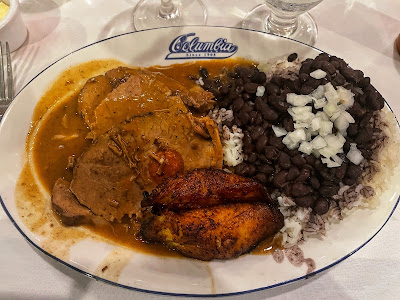









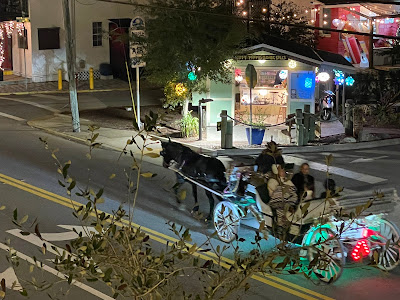




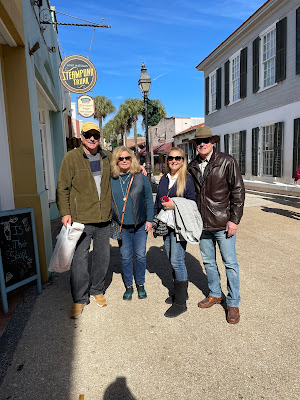



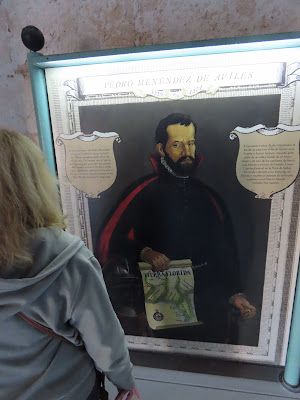
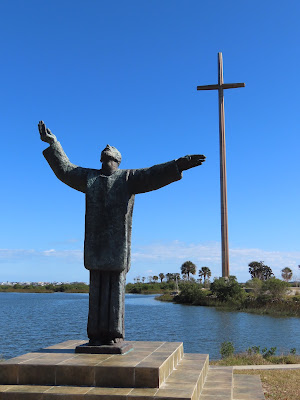














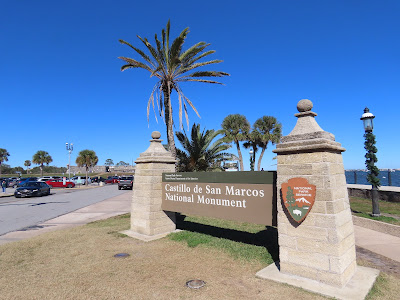


























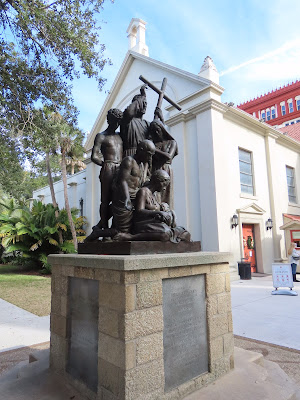



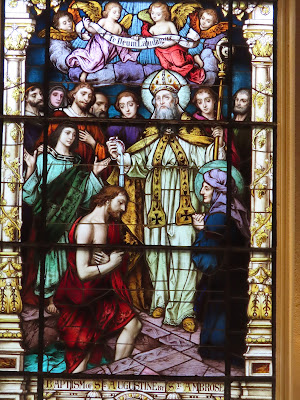



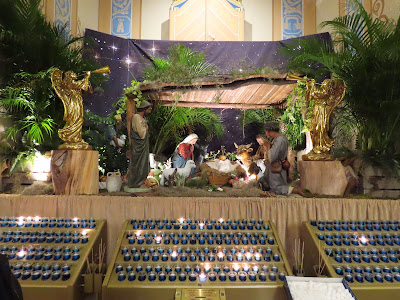







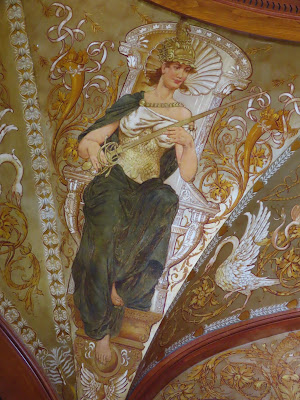

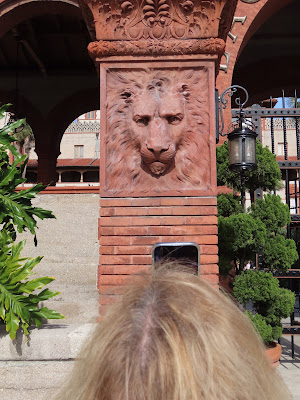






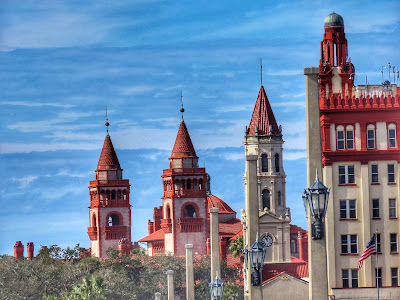
































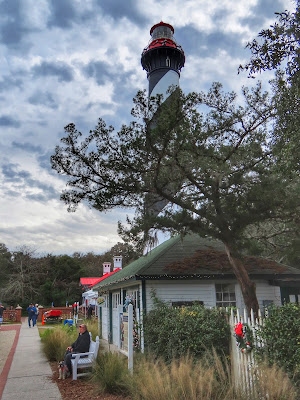
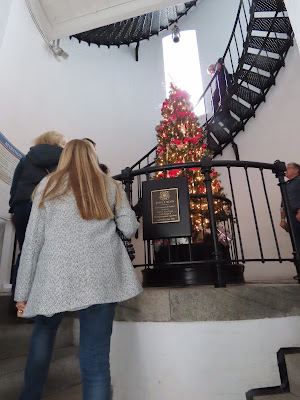


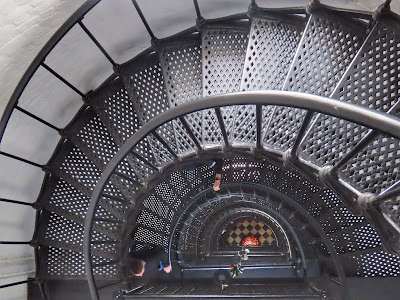














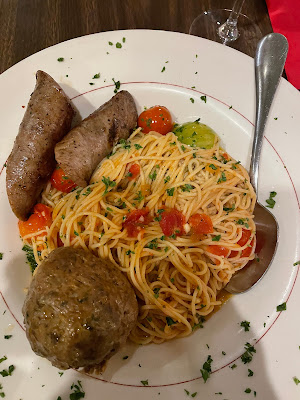


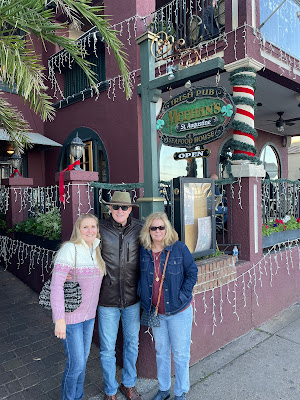


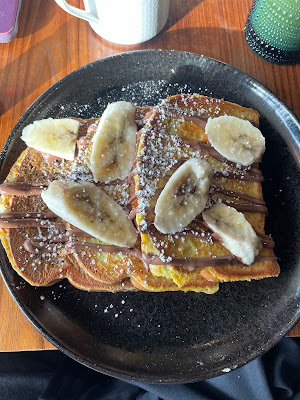













No comments:
Post a Comment